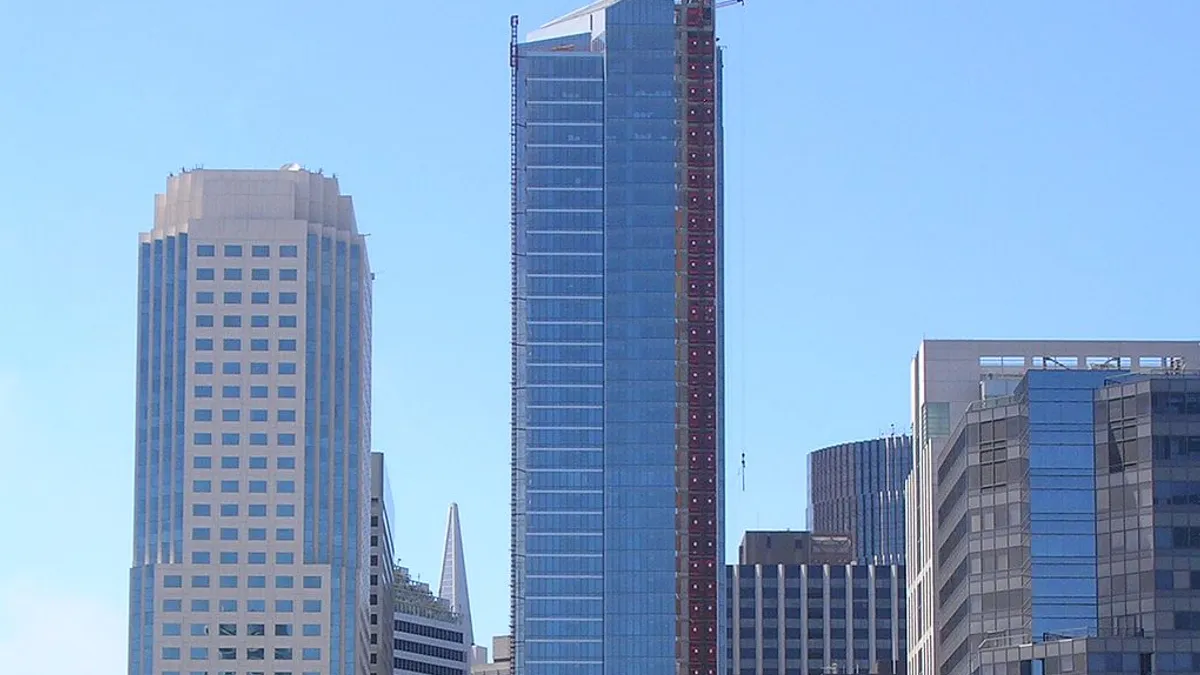Dive Brief:
-
Engineers have come up with a potential solution, priced between $100 million and $150 million, that could stop San Francisco's 58-story Millennium Tower from sinking and bring it upright again, according to The San Francisco Chronicle.
-
LERA and DeSimone Consulting Engineers have proposed drilling up to 100 new piles into the bedrock 200 feet underneath the building. These would add to the 900 existing piles that reach only 60 to 91 feet below ground.
-
Unstable soil beneath the structure, unsound design and engineering, and groundwater pumped from a major transit project next door have all been targeted as reasons why the building has sunk 17 inches since construction began in 2005.
Dive Insight:
The Millennium Tower has become somewhat of a punch line among area industry professionals who are developing similarly proportioned high-rises. An architect behind the nearby 61-story Salesforce Tower noted that the high-rise was "firmly and safely socketed into Earth's bedrock," likely in reference to the beleaguered Millennium Tower.
The tower's sinking has prompted calls by city officials to rethink seismic building considerations. San Francisco Mayor Ed Lee told officials to revise the city's earthquake safety plan to mandate a soil condition and earthquake evaluation during property sales, The New York Times reported. California legislators, too, are turning their efforts ahead of the summer recess to seismic safety programs.
Seismic activity and building preparedness are nothing new for California. In 2015, the Los Angeles City Council put in place the nation's most comprehensive seismic building code regulations to that point. The initiative required retrofits of around 15,000 buildings and cost property owners anywhere from $60,000 to millions of dollars. The estimated 13,500 apartment buildings were given seven years to comply with the new regulations, while another 1,500 concrete buildings were allocated 25 years to get up to speed.
Given the inherent dangers of living in an earthquake-prone area, early warning is key to saving lives. Still, President Donald Trump's proposed 2018 budget cuts about $10 million in annual funding earmarked for the development of a West Coast seismic notification system. San Francisco's Bay Area Rapid Transit system already uses a scaled-down version to avoid derailments, but researchers need $38 million more to expand the system throughout the area.














